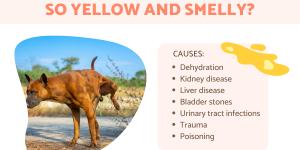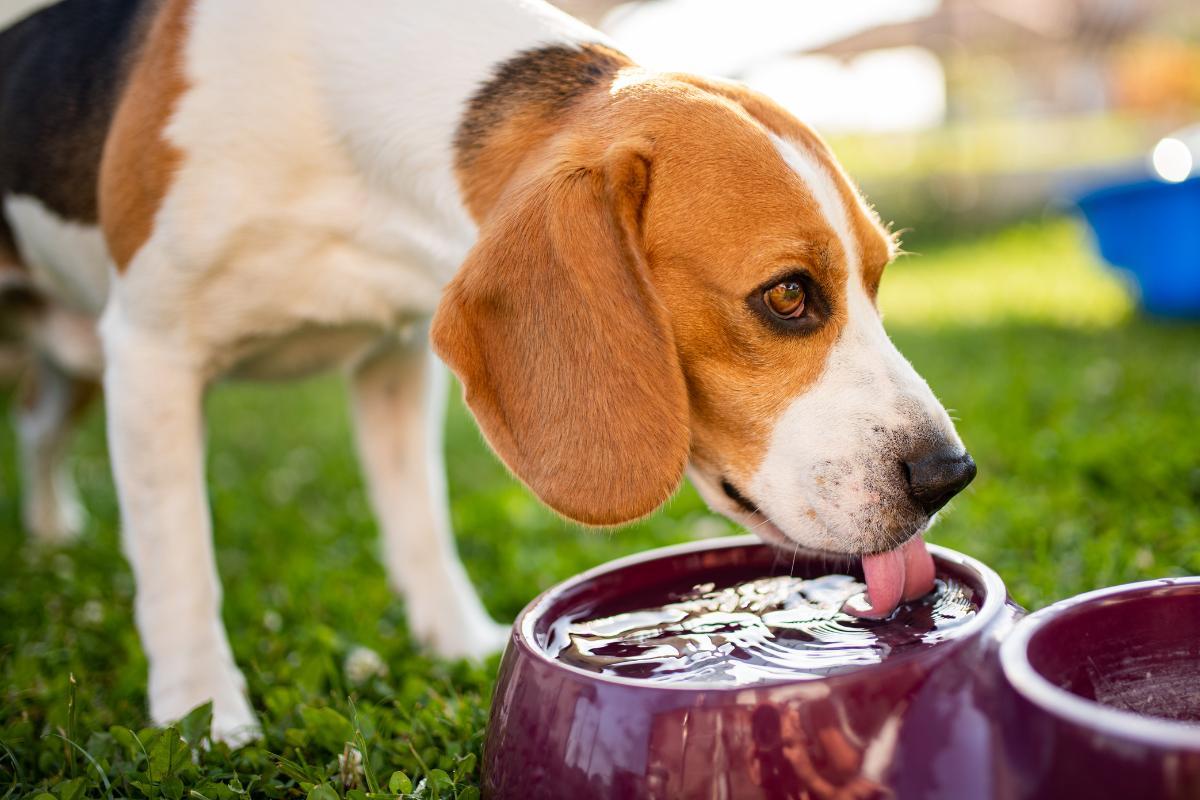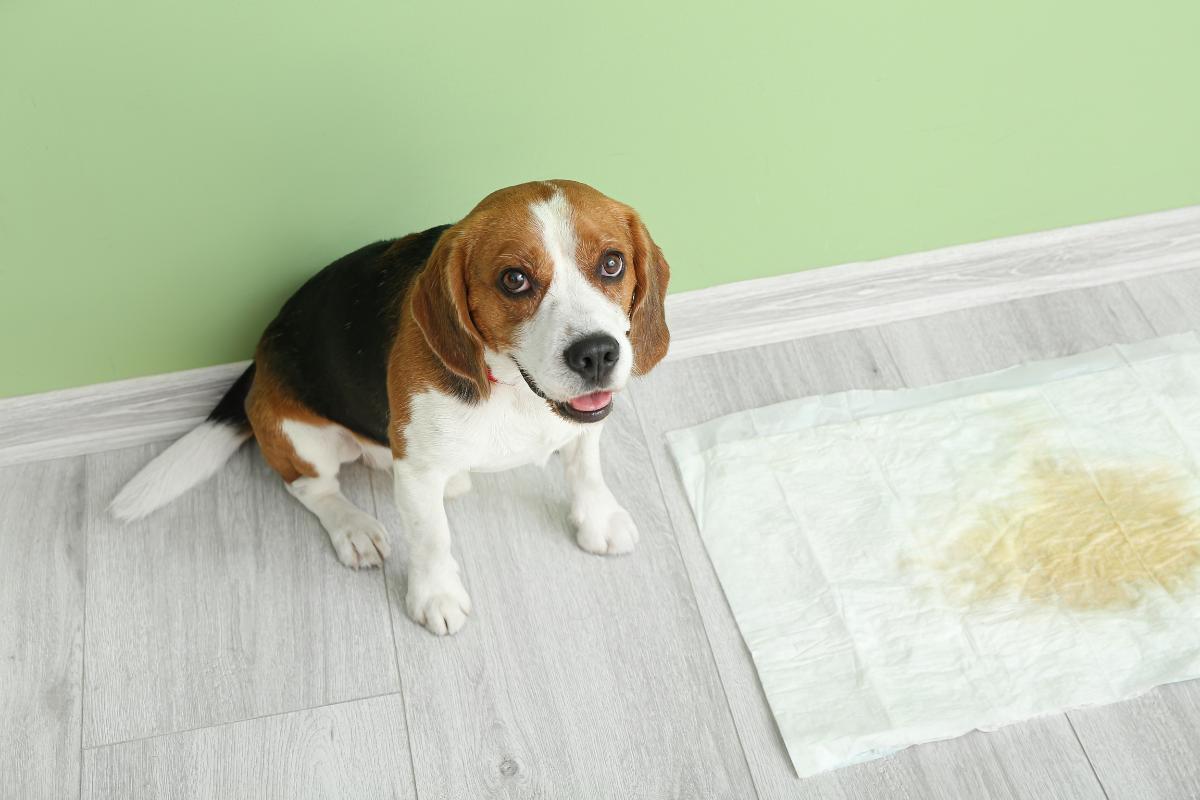Why Is My Dog Drinking and Peeing More Than Usual?



See files for Dogs
Excessive water consumption and frequent urination in dogs may be a sign of polyuria/polydipsia syndrome, which occurs when the normal control mechanisms for water intake and urine production are disrupted. In many cases, it can be an indication of an underlying health condition.
If you're wondering why your dog is experiencing these symptoms, the AnimalWised article provides detailed explanations about polyuria/polydipsia syndrome in dogs and what could be causing it.
Why is your dog drinking and peeing more than usual?
When a dog exhibits increased thirst and urination, it may be indicative of polyuria/polydipsia syndrome. The syndrome itself is not a specific condition, but rather a set of symptoms that can be indicative of an underlying medical issue. But how do we determine if the urine production or water consumption is abnormal? Let's delve into the details:
- Polyuria: refers to increased urine production in dogs, typically defined as producing more than 50 ml per kg of body weight per day. It is essential to differentiate polyuria from frequency, which is an increase in the number of times a dog urinates without a corresponding increase in urine volume.
- Polydipsia: refers to increased water consumption. In dogs, average water consumption ranges from 50-60 ml per kg of body weight per day, depending on factors like activity level, environmental temperature, and diet type. Polydipsia is considered when a dog consumes over 100 ml per kg of body weight per day.
Urine production is regulated by antidiuretic hormone (ADH), also known as vasopressin, which is produced in the hypothalamus and released by the pituitary gland. ADH acts on the kidneys, specifically on the renal tubules, promoting water reabsorption and reducing urine output. When ADH levels are low or its action is impaired, water reabsorption decreases, leading to increased urine production or polyuria.
On the other hand, water intake is regulated by the Thirst Center, which is also located in the hypothalamus. The Thirst Center monitors the body's hydration status and triggers the sensation of thirst to encourage water consumption when needed. When a dog is dehydrated or experiencing increased water loss, the Thirst Center stimulates the dog to drink more water or exhibit polydipsia.
Disruptions to the regulation of ADH and the Thirst Center can result in polyuria/polydipsia syndrome. Increased urine production prompts the dog to drink more water to prevent dehydration and maintain hydration. Conversely, increased water intake leads to elevated urine production to maintain proper water balance. These signs often appear in a compensatory manner, where one triggers the other.
You might be interested in this other article, where we explain why your dog's urine is dark yellow and smells.
Symptoms associated with polyuria/polydipsia syndrome
Some common symptoms associated with polyuria/polydipsia syndrome include:
- Increased urination: dogs with polyuria/polydipsia syndrome will typically urinate more frequently than normal. They may have accidents in the house or need to go outside to urinate more frequently than usual.
- Excessive thirst: dogs with polydipsia will exhibit increased water intake. They may constantly seek out water sources, drink from unusual places, or excessively lick or chew on ice.
- Large volume of urine: the increased urine production in polyuria/polydipsia syndrome leads to larger volumes of urine being produced. You may notice that your dog's urine output is significantly greater than usual.
- Changes in urine color or odor: the urine of dogs with polyuria/polydipsia syndrome may appear more dilute or lighter in color. It can also have a stronger odor due to the increased volume and concentration of waste products.
- Increased accidents or incontinence: dogs with polyuria/polydipsia syndrome may struggle to control their bladder, resulting in more frequent accidents or incontinence.
Do not miss this other article, where we discuss what urinary incontinence in dogs is, as well as the causes and treatment.
Underlying conditions of polyuria/polydipsia syndrome
As mentioned before, both polyuria and polydipsia can be caused by various underlying conditions. Some of the most common conditions associated with polyuria/polydipsia syndrome in dogs include:
- Diabetes mellitus: diabetes is a metabolic disorder characterized by high blood glucose levels. The excess glucose in the bloodstream spills into the urine, leading to increased urine production (polyuria). To compensate for the excessive fluid loss, dogs with diabetes will exhibit increased water consumption (polydipsia).
- Kidney disease: chronic kidney disease (CKD) can impair the kidneys' ability to concentrate urine, resulting in increased urine production. As a compensatory response, dogs with CKD may drink more water to maintain hydration.
- Urinary tract infections (UTIs): infections in the urinary tract can cause irritation and inflammation, leading to increased urine production. Dogs with UTIs may also drink more water due to discomfort or as a response to the body's attempt to flush out the infection.
- Cushing's Syndrome (Hyperadrenocorticism): cushing's syndrome is an endocrine disorder characterized by excess production of corticosteroids. These hormones can interfere with the normal regulation of urine production and water balance, leading to polyuria and polydipsia.
- Hyperthyroidism: hyperthyroidism occurs when the thyroid gland overproduces thyroid hormones. This condition can affect renal function and result in increased urine production and water intake.
- Liver disease: liver dysfunction can disrupt the normal metabolism of hormones and impact fluid balance in the body, leading to polyuria and polydipsia.
- Psychogenic polydipsia: psychogenic polydipsia is a behavioral disorder characterized by excessive water consumption without a physiological cause. It is often associated with psychological factors, stress, or boredom.
These are just a few examples of conditions that can contribute to polyuria and polydipsia in dogs. It's important to remember that these symptoms can indicate various underlying health issues, some of which may require prompt medical attention.
Do not miss this other article where we explain what kidney failure in dogs is.

What to do if my dog drinks a lot of water and urinates a lot?
If you notice that your dog is drinking an unusually large amount of water and urinating excessively, it's important to take action to ensure their well-being. The first step is to schedule an appointment with your veterinarian for a thorough examination.
Excessive thirst and urination can be symptoms of various medical conditions, some of which may require immediate attention. By seeking veterinary care, you can get an accurate diagnosis and receive appropriate treatment options tailored to your dog's specific needs. Remember, timely veterinary attention is essential to maintain your dog's health and quality of life.
While waiting for the veterinary appointment, there are a few things you can do to help manage the situation.
- Monitor and document: keep track of your dog's water intake and urination patterns. Note down the frequency and volume of urination, as well as the amount of water they consume. This information will be helpful when discussing the issue with your veterinarian. Pay attention to any other signs or symptoms your dog may be experiencing, such as changes in appetite, weight loss, lethargy, or any unusual behavior. Inform your veterinarian about these observations, as they can provide valuable insights into the underlying condition.
- Provide fresh water: ensure that your dog has access to clean and fresh water at all times. It is important to meet their increased water intake needs to prevent dehydration. Regularly refill the water bowl with fresh water and clean the bowl daily.
- Avoid restricting water: while it may be tempting to limit your dog's water intake to reduce urination, it is not recommended unless advised by a veterinarian. Restricting water can lead to dehydration and may worsen the underlying condition.
You might be interested in this other article, where we explain how to get rid of the urine smell in your home.
Diagnosis and treatment of polyuria/polydipsia syndrome
Your veterinarian will conduct a comprehensive physical examination of your dog and ask you questions about their medical history, diet, and lifestyle. This information helps in assessing the overall health of your dog and narrowing down potential causes.
Your veterinarian may recommend various diagnostic tests to determine the underlying cause of polyuria/polydipsia. These may include:
- Blood tests
- Urinalysis
- Imaging studies
- Additional tests
In terms of the treatment, it will depend on the underlying cause identified through diagnostic tests. Some common treatment approaches include medications to manage or alleviate the underlying problem.
In certain cases, modifying your dog's diet can help manage or improve the condition. Your veterinarian may recommend a special diet tailored to address the specific underlying cause. Depending on the diagnosis, your veterinarian may provide guidance on managing your dog's water intake to ensure proper hydration without exacerbating the condition. This may involve monitoring water consumption or providing access to water at specific times.
In cases where structural abnormalities or tumors are identified, surgery may be necessary to correct the issue or remove the growth.
This article is purely informative. AnimalWised does not have the authority to prescribe any veterinary treatment or create a diagnosis. We invite you to take your pet to the veterinarian if they are suffering from any condition or pain.
If you want to read similar articles to Why Is My Dog Drinking and Peeing More Than Usual?, we recommend you visit our Other health problems category.
- Suárez, M, Giné, J., Menes, I. (2012). Diagnostic approach to the patient with polyuria/polydipsia . Association of Veterinary Specialists in Small Animals, Continuing Education.






